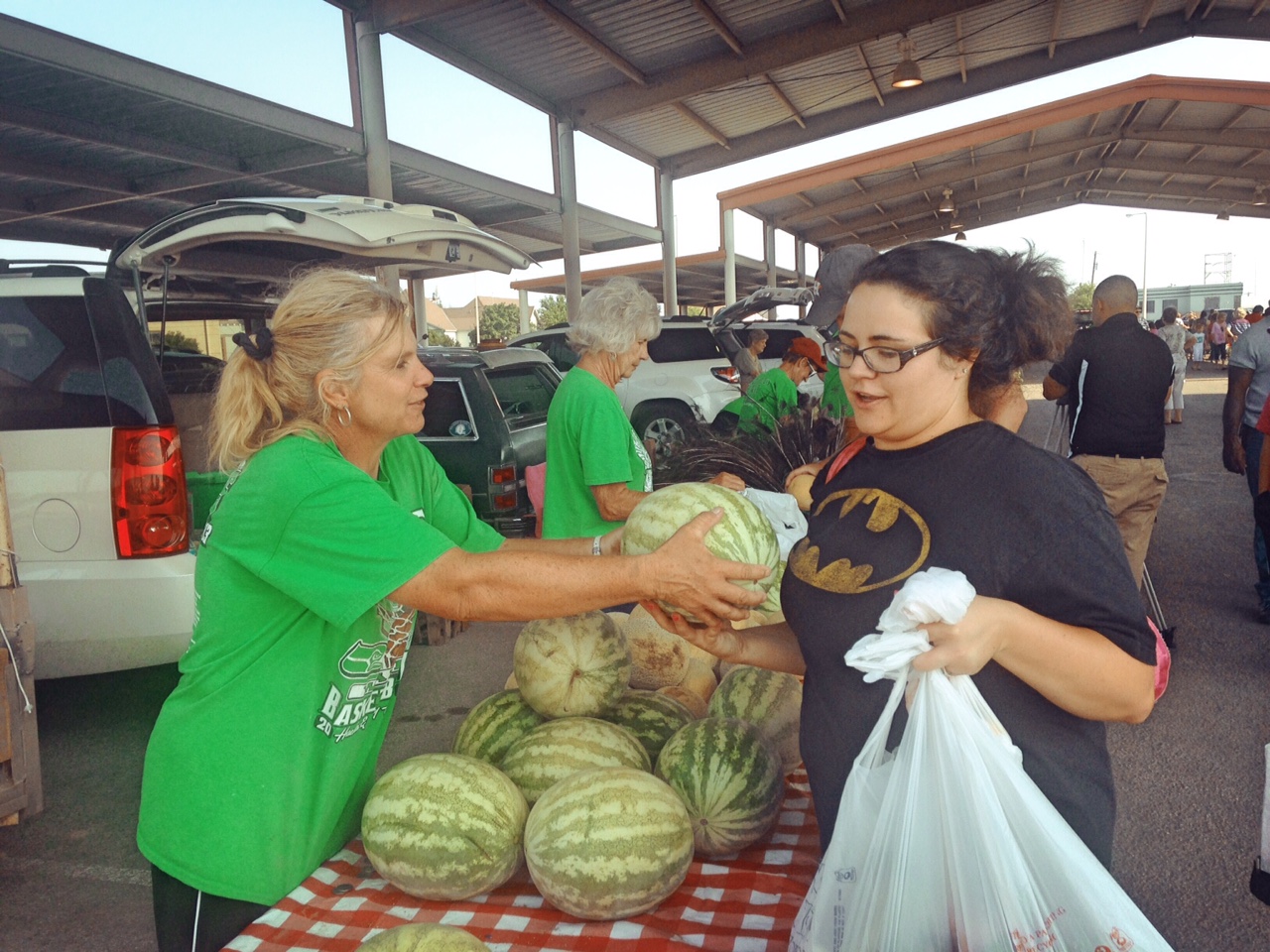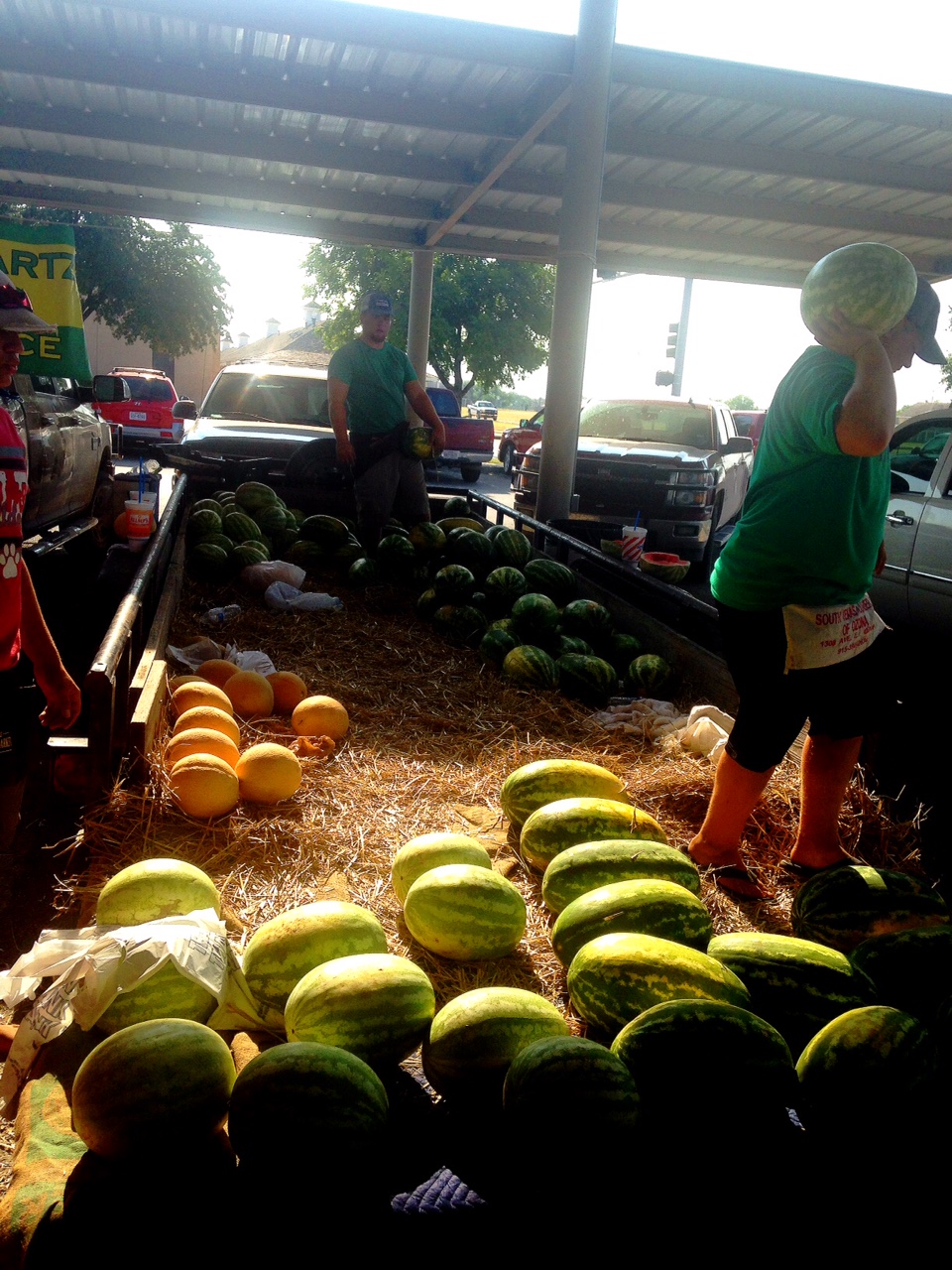The sweet scent of juicy watermelons hung on the air at the Concho Valley Farmer’s Market on Saturday morning, scores of shoppers mixing amongst tables that bowed under the weight of seeded and seedless varieties.
Over a century of combined experience in melon raising and harvesting was split between the market’s two main attractions, families stocking melons by the hundred for the annual Melon Fest.
Behind a table covered with a red-and-white checked tablecloth and a cautious pile of light, round melons, two generations of watermelon growers sold off their season’s crops as Kvepil Melons.
Terri Walling, her mother Dorothy Kvepil and one of her two sisters were present on Saturday and have been in the melon business for some 47 years out on Country Club Road to the south of town.

With their first successful summer behind them, the Kvepils gradually grew their crops each year, adding more melons and selling them on their property and at roadside stands.
“We used to [sell to supermarkets] back when our kids were younger and they were all around more, but as the kids have grown and dispersed we’ve had to pare down a little bit,” Walling said. “We just kind of sell here at the market and in town a little bit at roadside stands, and of course out at our place.”
Walling has four children and each of her sisters have two, and when the kids are home, all help to pick the melons in the morning. For nearly five decades caring for the crop has been every family member’s summer job.
Having racked up so many years of experience, Walling said there are a few tricks for growing and selecting the right melon, and not all of them need to be thumped our slapped.
“It depends on the variety,” she said of the thumping. “Some varieties, you tap it, you thump it, to see if it’s ripe. Some varieties, you don’t thump it. You look at the age or the maturity on the outside. You can kind of tell by the way the sun kisses it on the top a little bit.
“The other misconception is that watermelons require a lot of water,” she continued. “A lot of people that try to grow them tend to overwater them and they turn terrible. They absorb too much water and it tastes bad. The key is you’ve got to time your watering just right, which we kind of have down to an art.”

The boys, Trent, 19, Tate, 17, and Trevor, 15, all hail from Wall and were born into a family business.
“Me and my two brothers, we’re partners,” said Trent Schwartz of Schwartz Brothers Produce. “This is our summer job and how we pay for college. Those two aren’t in there yet, but they’re saving up for it, and I’m paying for it right now.”
Schwartz is currently attending Angelo State University and studying meat and food science. For years, he and his brothers have been working watermelon patches on warm summer days, saving up money and learning the family business.
“My grandpa’s grown then probably for 55 years and he kind of got us started. My dad got us started on the garden side, so we’ve just gotten bigger and bigger every year,” Schwartz said. “We work 17-, 18-hour days some days when the watermelons start coming off. [It’s] a lot of work. We start [planting] in March to April.”
On Saturday, Schwartz estimated he and his brothers brought along some 250 watermelons and had “sold a lot of them” three hours after opening. One of those went to the Simms family, who boasted about the high quality melons they’d purchased from the boys the week before.
“We try to come [as often as we can],” said Lizzie Simms. “The supermarket melons aren’t good. These are super sweet.”
Simms acknowledged the hard work of the families present at the Farmer’s Market and said she feels it’s important to support them by buying local.
“I grew up in East Texas and my dad had a farm,” she said. “We had watermelons. Not a lot of people do that anymore.”

“People take their melons very seriously around here,” Walling smiled.
Subscribe to the LIVE! Daily
Required






Post a comment to this article here: